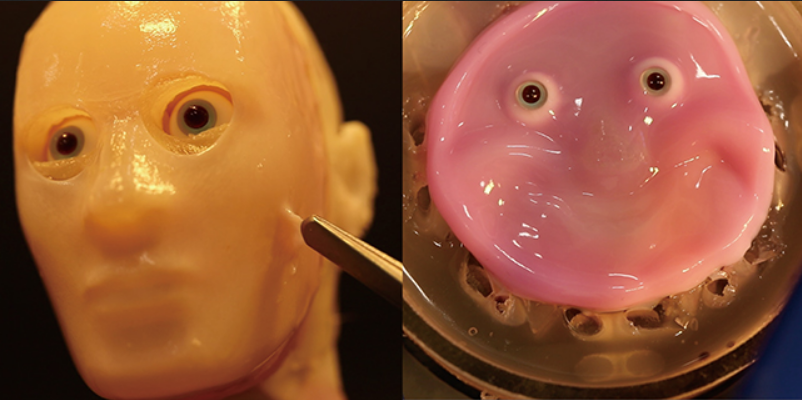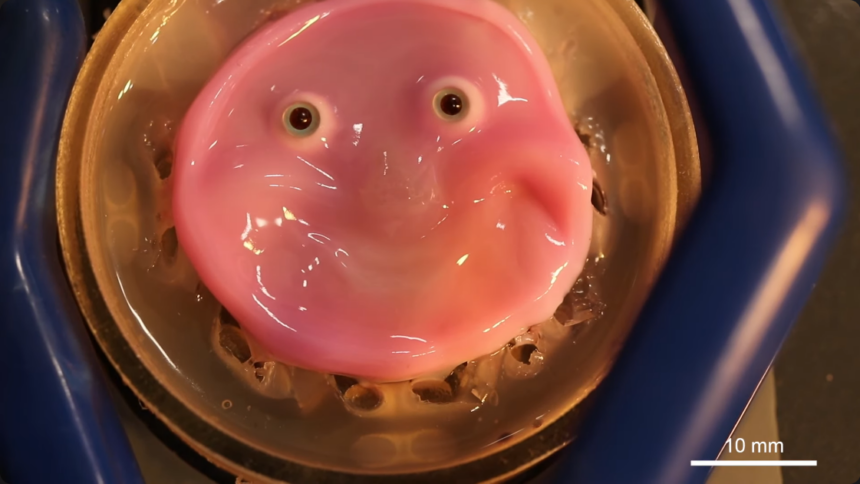A new method to fix human skin tissue to robot ‘faces’ has brought researchers one step closer to making robots appear more like flesh and blood human beings. This innovative technology not only aims to improve the mobility and self-healing capabilities of robots but also enhances their ability to incorporate sensors within their structures.
While the potential applications of this technology are noteworthy, the example video clips accompanying the research from the University of Tokyo team might be unsettling for some viewers.
“By mimicking human skin-ligament structures and by using specially made V-shaped perforations in solid materials, we found a way to bind skin to complex structures,” says mechanical engineer Shoji Takeuchi. “The natural flexibility of the skin and the strong method of adhesion mean the skin can move with the mechanical components of the robot without tearing or peeling away.”
Attaching skin tissue to solid surfaces has always been challenging. Previous approaches, such as using miniature hooks, were ineffective on curved surfaces and limited the robot’s range of motion. The team at the University of Tokyo overcame this by using a custom-made collagen gel with cells grown from human skin as the adhesive between the tissue and the robot.

By mimicking the attachment method of human skin, the researchers engineered small perforations in the solid surface below, allowing the skin to adhere even as the robot’s face shifted and changed shape. One significant advantage of this new approach is self-healing; future cyborgs could potentially repair their skin tissue similarly to humans. However, the technology still has a long way to go before reaching this stage.
“Manipulating soft, wet biological tissues during development is much harder than people outside the field might think,” says Takeuchi. “If sterility is not maintained, bacteria can enter, and the tissue will die. Now that we can do this, living skin can bring a range of new abilities to robots.”
The team suggests that their new approach could assist research into skin aging, cosmetics, and plastic surgery. Moreover, this technology could easily find a market in the film industry, potentially inspiring a new horror franchise.

Joking aside, this development brings lifelike humanoid robots another step closer. By adopting some of our best characteristics, these machines could become more durable and helpful. “In this study, we managed to replicate human appearance to some extent by creating a face with the same surface material and structure as humans,” says Takeuchi. “Creating robots that can heal themselves, sense their environment more accurately, and perform tasks with human-like dexterity is incredibly motivating.”
The research has been published in Cell Reports Physical Science.






